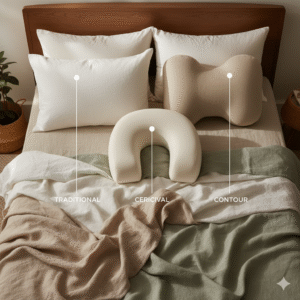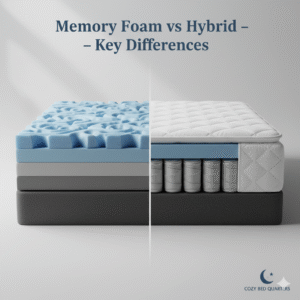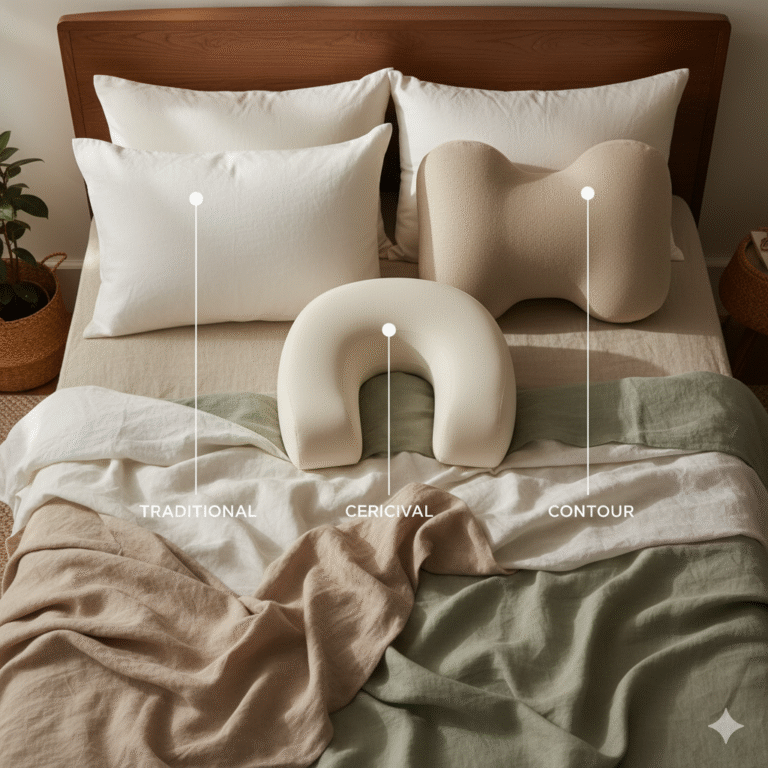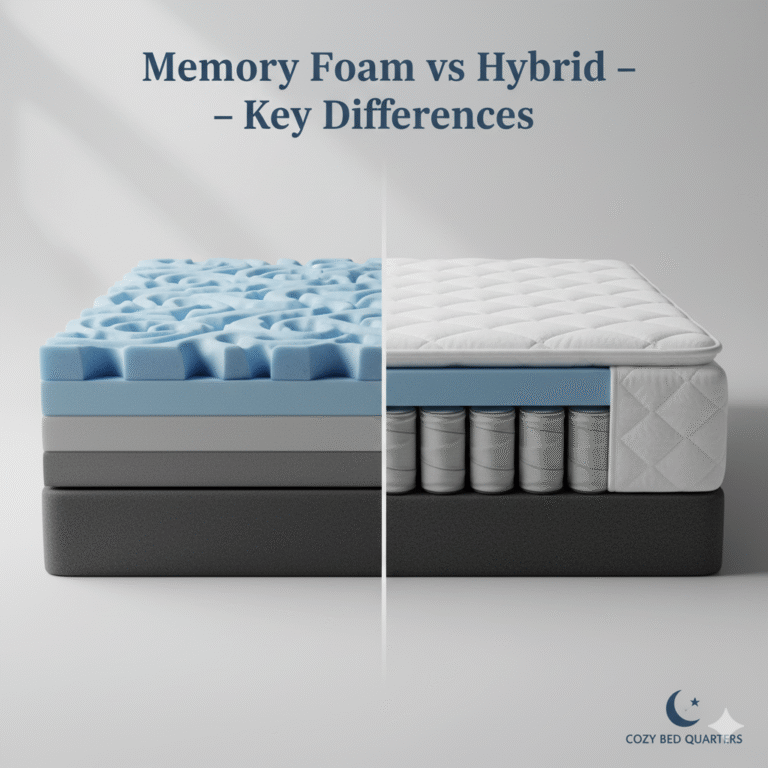The Psychology of Bedtime: Why We Delay Sleep and How to Rest Better
The Psychology of Bedtime uncovers why many of us delay sleep even when we’re tired—and how small, science-backed shifts in evening routines can turn restless nights into truly restorative rest. This guide explains the habits behind bedtime procrastination and gives you simple, sustainable steps to fall asleep easier, sleep deeper, and wake up energized.
Key Takeaways: The Psychology of Bedtime
- The Psychology of Bedtime shows that bedtime procrastination drains next-day energy and mood.
- Knowing your chronotype (natural sleep-wake rhythm) helps you schedule evenings that align with your biology.
- Short, screen-free wind-down routines reduce stimulation and cue melatonin release.
- Gentle habit design—tiny, repeatable steps—beats willpower for consistent, quality sleep.
Why the Psychology of Bedtime Matters
Answer first: We don’t postpone sleep because we don’t need it—we postpone it because evenings are our only control point. Understanding this mindset is the first step to change.
Bedtime procrastination—choosing to stay up despite fatigue—often feels like “me time” after a long day. Yet the cost is real: shorter sleep, lighter sleep, and foggier mornings. When we understand the thoughts and triggers that keep us up, we can reshape our nights with kinder routines that protect tomorrow’s energy. For foundational tips on healthy wind-downs, review the Sleep Foundation’s
sleep hygiene guide.
What Is Bedtime Procrastination?
Answer first: It’s delaying bedtime on purpose—usually to reclaim personal time—even though you know you’ll be tired tomorrow.
Many people call it “revenge bedtime procrastination.” It can look like “just one more” episode, endless scrolling, or last-minute chores that spill into the night. Over time, this habit trims sleep opportunities and erodes deep, restorative stages. You’ll see it in your concentration, emotional balance, and motivation the next day.

Factors Behind Bedtime Procrastination
Answer first: Three forces usually drive late nights—self-regulation slips, a night-owl body clock, and stress or stimulation right before bed.
Self-regulation challenges. Most of us think, “I should go to bed,” then don’t. Frictionless entertainment and tired willpower make it hard to stop. When this repeats, the brain learns to expect stimulation late at night.
Chronotype (your natural sleep-wake rhythm). If your internal clock favors late evenings, early bedtimes feel uphill. Instead of fighting biology, align your most demanding tasks to when you’re naturally alert and schedule wind-downs to start earlier. If you’re actively resetting your rhythm, see Cozy Bed Quarters’ guide to
resetting circadian rhythm for better sleep.
Stress and overstimulation. Evenings are often our only unstructured hours, so we decompress with scrolling, gaming, or news. The brain reads this as “more wakefulness.” Gentle, low-stimulus activities—journaling, stretching, or aromatherapy—help the nervous system downshift. Explore Cozy Bed Quarters’ primer on
sleep-supporting scents and aromatherapy.

The Ripple Effect of Bedtime Procrastination
Answer first: Delayed bedtimes shorten and fragment sleep, which drags down energy, attention, and mood the very next day.
People who push bedtime often report six to seven hours of sleep, frequent wake-ups, and sluggish mornings. Consistent sleepers average seven to eight hours with steadier energy and clearer thinking. The gap might be just 45 minutes, but the effect compounds—especially across a busy week. To understand how sleep fuels overall well-being, visit
The Impact of Sleep on Health.
| Bedtime Procrastinators | Consistent Sleepers | |
|---|---|---|
| Sleep Duration | 6–7 hours | 7–8 hours |
| Sleep Quality | Restless, fragmented | Deep, restorative |
| Daytime Energy | Fatigue, drowsy | Energized, focused |
| Cognitive Function | Foggy, forgetful | Clear, sharp |

How to Overcome Bedtime Procrastination
Answer first: Make sleep the default by lowering friction: a set wind-down, fewer screens, and a tiny “first step” you can repeat nightly.
Set a soothing routine. Dim lights, tidy the nightstand, brew caffeine-free tea, read a relaxing book, or play soft music. Rituals cue the brain that it’s time to shift gears. For a step-by-step sequence, try Cozy Bed Quarters’
Bedtime Rituals for Improved Sleep.
Say goodnight to screens. Blue light delays melatonin and notifications keep the mind on alert. Set a “screens-off” alarm 60 minutes before bed and keep devices outside the bedroom. For extra structure, borrow ideas from the Sleep Foundation’s
healthy sleep habits.
Stress less before sleep. Brief journaling, four-count breathing, or a warm shower can drop arousal quickly. Aromatherapy (lavender, chamomile) adds a gentle cue that bedtime is near. Pair these with a consistent lights-out time—even on weekends—to support your body clock.
Busting the Myth: Night Owls Can’t Change
Answer first: Chronotype matters, but small, steady changes shift your timing. Think earlier light, consistent wake times, and gradually moved routines.
While genes influence timing, behavior still counts. Start by moving your wind-down 15 minutes earlier every few nights and keep wake-up times fixed. Get morning light and avoid late caffeine. Over two to three weeks, your bedtime will follow. If you want a gentle environment reset, Better Homes & Gardens shares practical, design-led tips in
8 ways to create a stress-free bedroom.
Eco-Friendly vs. Conventional Bedtime Habits
Answer first: Sustainable choices often feel better in bed—breathable fabrics, softer finishes, and warmer light—while reducing environmental impact.
Eco-friendly bedding (organic cotton, linen, bamboo) breathes better and relies on fewer harsh chemicals than many synthetics. That means fewer heat spikes and less nighttime restlessness. Low-watt, warm-tone bulbs and dimmers support melatonin, and natural textures (wood, wool, cotton) dampen noise and glare. For a deeper dive into greener upgrades, see Cozy Bed Quarters’
Eco-Friendly Sleeping: A Guide to Green Bedding Options
and Parachute’s advice on
ways to sleep better.

FAQ
- What is the psychology of bedtime?
- It’s the study of how thoughts, habits, and emotions shape our nightly routines and sleep quality. To see how sleep affects mood, visit Cozy Bed Quarters’
How Sleep Affects Emotions. - Why do people procrastinate going to bed?
- Most bedtime procrastination comes from stress relief, low evening willpower, and the desire to reclaim personal time. Gentle routines and earlier wind-downs make change easier.
- Can bedtime routines really improve sleep?
- Yes. Consistent, calming routines cue the body that sleep is near, improving duration and depth. For practical steps, see Cozy Bed Quarters’
Bedtime Rituals for Improved Sleep.
Final Thoughts: The Psychology of Bedtime
The Psychology of Bedtime reminds us that procrastination isn’t laziness—it’s a mix of stress, stimulation, and habit loops. When you lower evening friction, align with your chronotype, and repeat a short wind-down, sleep stops feeling like a chore and starts feeling inevitable. Keep building your routine with Cozy Bed Quarters’ expert guides and give yourself permission to rest well—tonight and every night.
Related Reading
From Cozy Bed Quarters
Trusted External Sources
- Sleep Foundation — Mastering Sleep Hygiene
- Better Homes & Gardens — Stress-Free Bedroom Ideas
- Parachute Home — Ways to Sleep Better





















